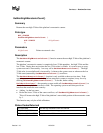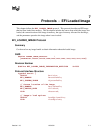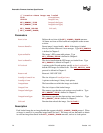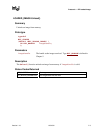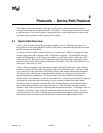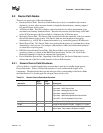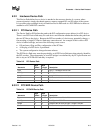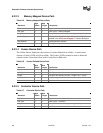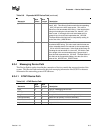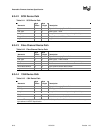
Protocols — Device Path Protocol
Version 1.10 12/01/02 8-3
8.3 Device Path Nodes
There are six major types of Device Path nodes:
• Hardware Device Path. This Device Path defines how a device is attached to the resource
domain of a system, where resource domain is simply the shared memory, memory mapped
I/O, and I/O space of the system.
• ACPI Device Path. This Device Path is used to describe devices whose enumeration is not
described in an industry-standard fashion. These devices must be described using ACPI AML
in the ACPI name space; this Device Path is a linkage to the ACPI name space.
• Messaging Device Path. This Device Path is used to describe the connection of devices outside
the resource domain of the system. This Device Path can describe physical messaging
information (e.g., a SCSI ID) or abstract information (e.g., networking protocol IP addresses).
• Media Device Path. This Device Path is used to describe the portion of a medium that is being
abstracted by a boot service. For example, a Media Device Path could define which partition
on a hard drive was being used.
• BIOS Boot Specification Device Path. This Device Path is used to point to boot legacy
operating systems; it is based on the BIOS Boot Specification Version 1.01. Refer to the
References appendix for details on obtaining this specification.
• End of Hardware Device Path. Depending on the Sub-Type, this Device Path node is used to
indicate the end of the Device Path instance or Device Path structure.
8.3.1 Generic Device Path Structures
A Device Path is a variable-length binary structure that is made up of variable-length generic
Device Path nodes. Table 8-1 defines the structure of a such a node and the lengths of its
components. The table defines the type and sub-type values corresponding to the Device Paths
described Section 8.3; all other type and sub-type values are Reserved.
Table 8-1. Generic Device Path Node Structure
Mnemonic
Byte
Offset
Byte
Length
Description
Type 0 1 Type 0x01 – Hardware Device Path
Type 0x02 – ACPI Device Path
Type 0x03 – Messaging Device Path
Type 0x04 – Media Device Path
Type 0x05 – BIOS Boot Specification Device Path
Type 0xFF – End of Hardware Device Path
Sub-Type 1 1 Sub-Type – Varies by Type. (See Table 8-2.)
Length 2 2 Length of this structure in bytes. Length is 4 + n bytes.
Specific Device Path Data 4 n Specific Device Path data. Type and Sub-Type define
type of data. Size of data is included in Length.



